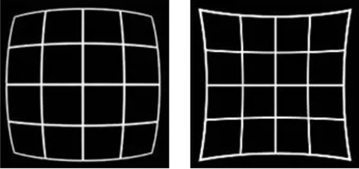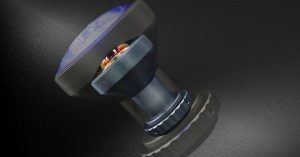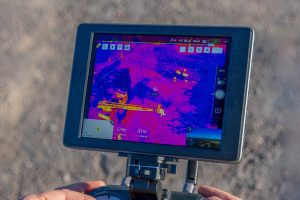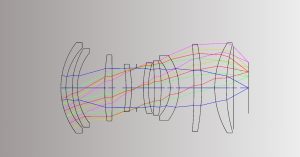Key Takeaways:
- Wide angle lenses offer a broad field of view, characterized by short focal lengths.
- Commonly used in photography for capturing expansive scenes, they are also integral in security, automotive, and aerial systems for enhanced coverage and safety.
- Wide angle lenses vary in types, including super-wide and fisheye, with fields of view up to 180°.
- Key considerations in their design include field of view, focal length, wavelength compatibility, chief ray angle, and distortion control.
- Advances in digital image processing have expanded their applications, particularly for ultra-wide and fisheye lenses.
Wide Angle Lens Features
A wide-angle lens, as its name implies, offers a broad field of view, characterized by a short focal length and a wide viewing angle.
Traditionally, wide-angle lenses are a staple in photography, frequently used to capture expansive scenes such as landscapes, buildings, and large outdoor vistas. These lenses allow photographers to emphasize the foreground while simultaneously capturing a broad expanse of the background, creating visual effects that standard lenses cannot achieve.
Moreover, beyond traditional photography, wide-angle lenses have found extensive applications in various fields, including security surveillance, automotive systems, and aerial photography. Additionally, in security monitoring, wide-angle lenses increase the field of view, enabling broader real-time coverage. This can reduce the number of cameras needed for a given area, thus cutting installation and maintenance costs. Furthermore, in vehicles, wide-angle lenses are integral to functions like dash cams, reverse cameras, and other driver assistance systems, enhancing both safety and convenience.
Specification of Wide Angle Lenses
1. Field of view
In order to obtain more imaging information, the field of view of the lens must be expanded. The wide-angle lens is characterized by a large imaging field of view, and the field of view size is also commonly used as a standard for judging whether the lens is a wide angle lens. Generally speaking, a wide-angle lens refers to a lens with a full field of view angle of 80-120°. A lens with a full-field angle greater than 120°can be called a super-wide-angle lens. An extreme wide-angle lens with a field of view close to or even greater than 180°is called a fisheye lens. In a broad sense, the above lenses can be called wide-angle lenses.2. Focal length or target surface size
Wide-angle lenses used in traditional photography generally refer to lenses with focal lengths less than 38mm. Due to the small size of the detector used for security, the focal length of the common wide-angle security lens is also shorter, generally less than 10mm. Some fisheye lenses even have a focal length of less than 1mm.3. Wavelength
Conventional wide-angle lenses cover visible wavelengths. For wide-angle lenses with poor imaging environment or night imaging, it is generally used with short-wave infrared, because the short-wave infrared penetration is better, and the illumination of active imaging is also concealed. If night and day monitoring is required at the same time, the lens design should consider both visible and short-wave infrared bands. In addition, the development of thermal imaging is also developing in the direction of a large field of view, and there are also wide-angle lenses used in long-wave infrared imaging on the market.4. Chief ray angle
The wide angle lens is used with the detector, and the selection or design of a suitable wide angle lens must consider the Chief Ray Angle (CRA) of the detector. Due to the particularity of the wide angle lens itself, the edge image quality and relative illuminance of the lens are often poor. If there is a problem with the matching of the Chief Ray Angle (CRA), the image quality and relative illumination will further deteriorate. Generally, the difference between the CRA of the lens and the CRA of the detector should be controlled within 3 degrees.5. Distortion
For standard lenses, the general object-image relationship is
Image height = f’ × tan θ
Deviation from the theoretical image height indicates that the lens is distorted. Distortion is an aberration related to the size of the field of view. It does not affect image sharpness but impacts image proportion. Because the field of view of a wide-angle lens is much larger than that of a standard lens and can even reach 180°, distortion will increase non-linearly with the field of view. The image captured by a wide-angle lens appears “pincushioned” and is difficult to correct, making the usual object-image relationship no longer applicable.
The image relation of a wide-angle lens has different forms, with the more common one being image height=f ‘θ. And the distortion often needs to be compensated by the digital image processing system. It is also due to the development of this technology that the application of ultra-wide-angle lenses and fisheye lenses has become more extensive.

The Enduring Impact of Wide Angle Lenses
In conclusion, wide-angle lenses are indispensable tools in photography and various technological applications. Their ability to capture expansive scenes with a broad field of view has revolutionized visual storytelling and practical functionalities such as security surveillance and automotive systems. Understanding specifications like field of view, focal length, wavelength considerations, chief ray angle, and distortion types such as ‘barrel’ and ‘pincushion’ is crucial for optimizing their performance and achieving desired imaging results. With ongoing advancements in lens technology and digital image processing, the versatility and usability of wide-angle lenses, including ultra-wide-angle and fisheye lenses, continue to expand, promising exciting possibilities in the realm of imaging and beyond.
GREAT ARTICLE!
Share this article to gain insights from your connections!







